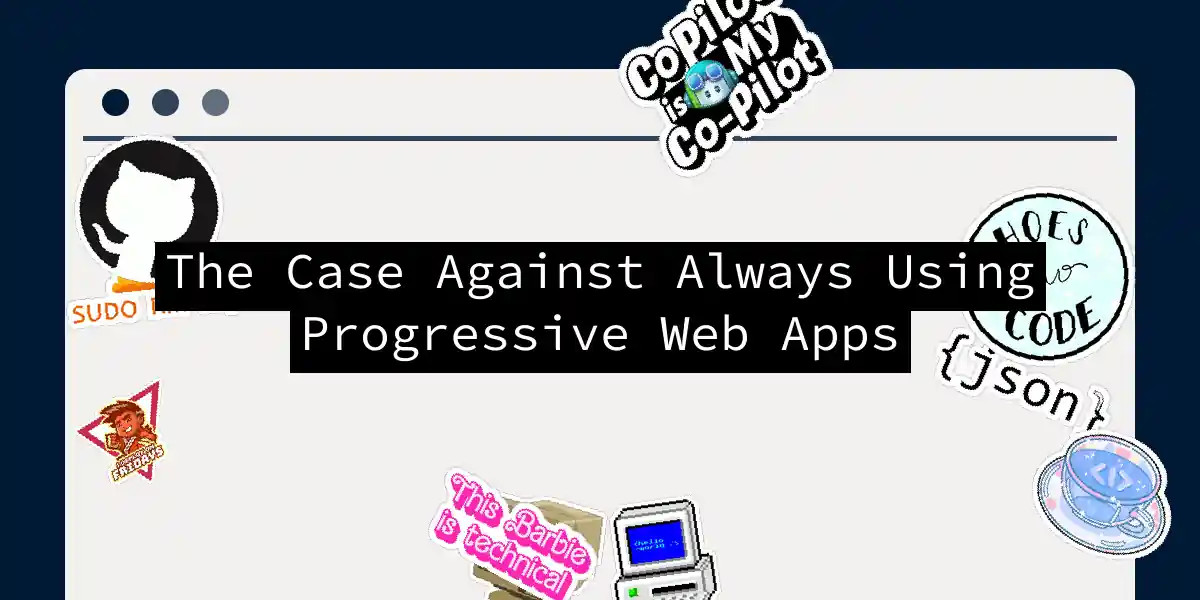When it comes to the world of web development, Progressive Web Apps (PWAs) have been hailed as the silver bullet that bridges the gap between traditional websites and native mobile applications. However, while PWAs offer a plethora of benefits, they are not the panacea for every development need. In this article, we’ll delve into the reasons why you might want to think twice before always opting for PWAs.
Limited Access to Device Capabilities
One of the most significant drawbacks of PWAs is their limited access to device hardware and software features. Unlike native apps, PWAs cannot tap into advanced device functionalities such as GPS, camera, fingerprint scanners, or Bluetooth as seamlessly[1][3][4].
For instance, if you’re developing an app that requires continuous GPS tracking, a PWA might not be the best choice. Here’s a simple flowchart to illustrate the decision process:
Browser Compatibility Issues
PWAs are heavily dependent on browser support, and this can be a major hurdle. Not all browsers support PWA features equally, which can lead to inconsistent user experiences. For example, Safari and Edge have restricted capabilities for some PWA features, which could affect the quality of the user experience[3][4].
Imagine developing a PWA that works flawlessly on Chrome but stutters on Safari. This inconsistency can be frustrating for both developers and users. Here’s a sequence diagram to show the potential issues:
Limited Offline Capabilities
While PWAs can function offline to some extent by caching resources, they are not as robust as native apps in this regard. Native apps can handle complex offline scenarios more efficiently, which is crucial for applications that need to work seamlessly without internet connectivity[3][5].
For example, if you’re developing a note-taking app that users expect to work flawlessly offline, a native app would be a better choice. Here’s a state diagram to illustrate the offline capabilities:
Storage Constraints
PWAs rely on caching resources locally, which can consume storage space on users’ devices over time. This can become a significant issue, especially for users with limited storage capacity. Managing this storage efficiently is crucial to prevent potential issues[1][4].
Imagine a user who has to delete other important apps to make space for your PWA’s cached data. Not exactly the best user experience.
User Trust and Security Concerns
Since PWAs are accessed through web browsers, users may have concerns about security and privacy. While PWAs use HTTPS and other security measures, they still lack the robust security features that native apps can offer, such as embedding TLS certificates directly[5].
Here’s a class diagram to illustrate the security differences:
Limited Presence on App Stores
PWAs may not enjoy the same visibility as native apps on app stores like Google Play or the Apple App Store. This can impact your app’s discoverability and hinder its reach to a wider audience. While it’s possible to list PWAs on app stores, the process is more complicated and requires additional steps[1][5].
Conclusion
While Progressive Web Apps offer a compelling solution for many use cases, they are not a one-size-fits-all solution. The limitations in device access, browser compatibility, offline capabilities, storage constraints, security concerns, and app store visibility are significant enough to warrant careful consideration before choosing PWAs over native apps.
In the end, the choice between a PWA and a native app should be based on your specific project requirements, target audience, and the trade-offs you are willing to make. By understanding these pros and cons, you can make an informed decision that best serves your users and your business goals.
So, the next time you’re tempted to jump on the PWA bandwagon, take a step back and ask yourself: “Is this the right tool for the job?” Because, as the old adage goes, “the right tool for the job” is not just about being trendy, but about being effective.
